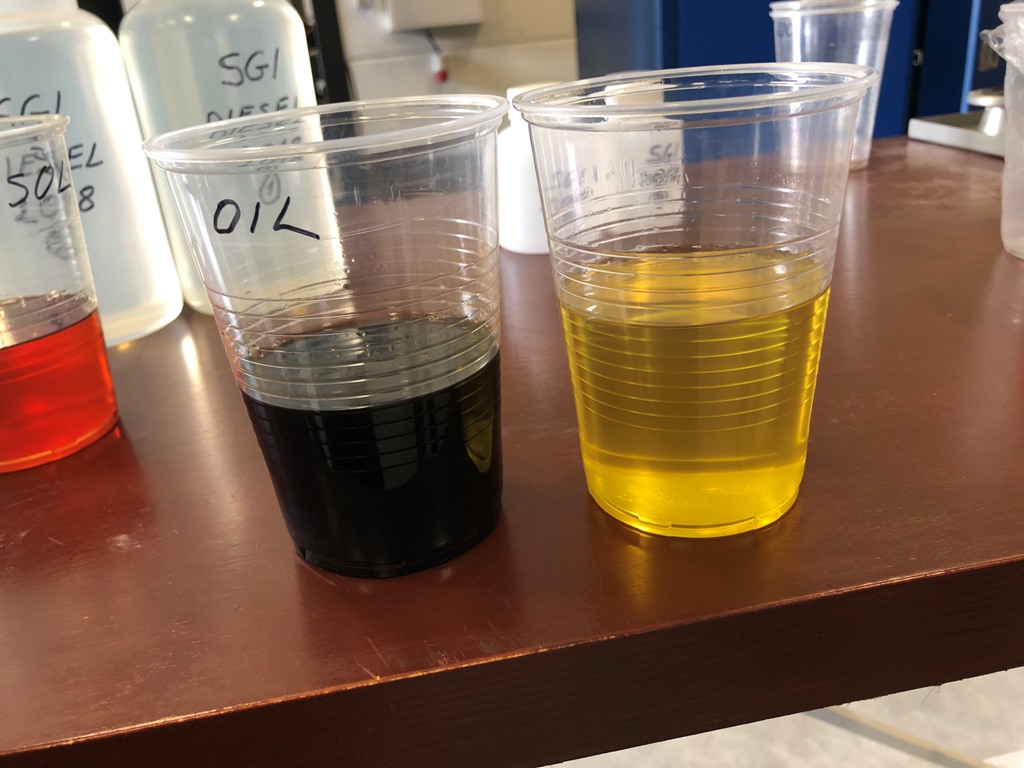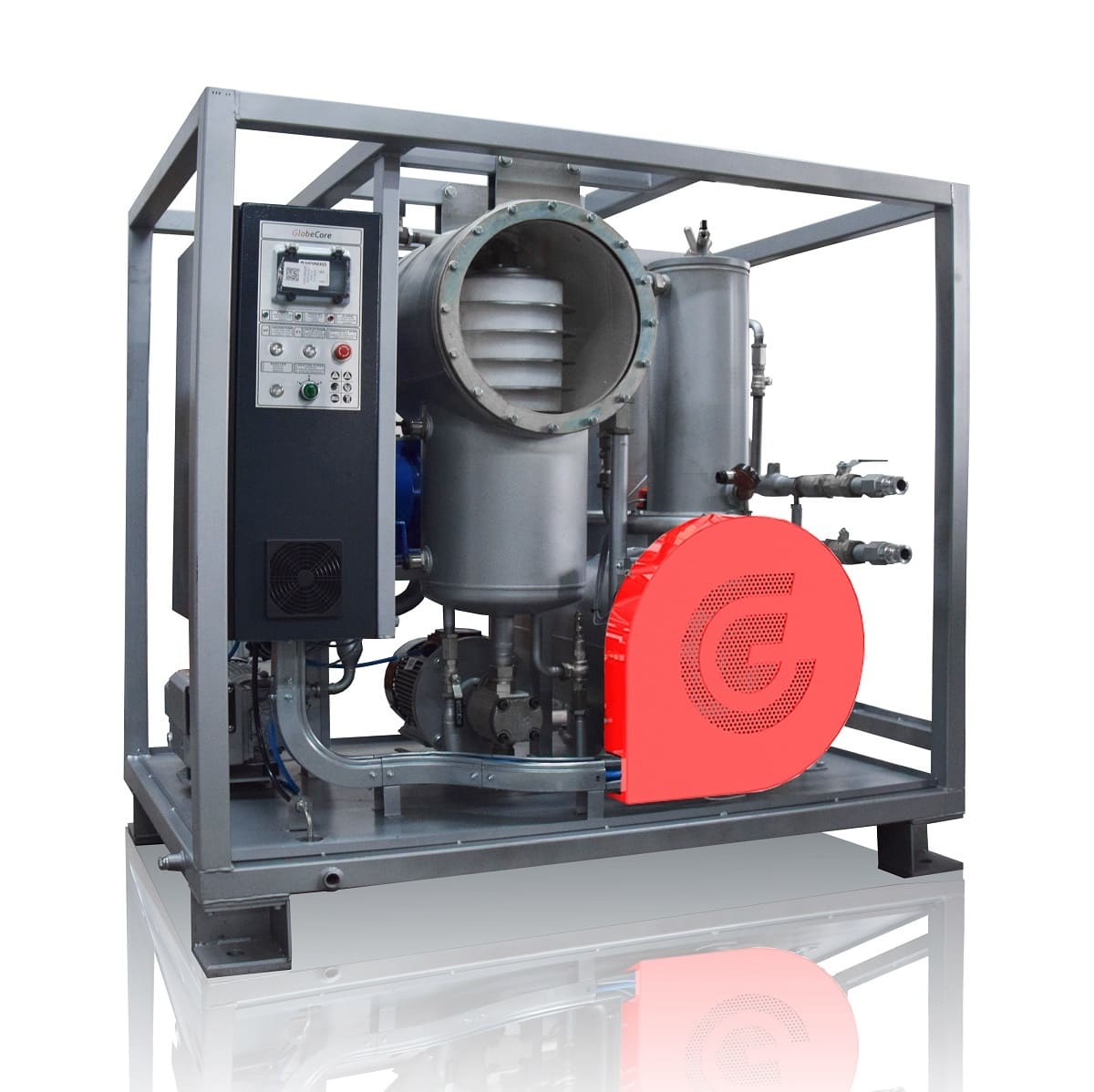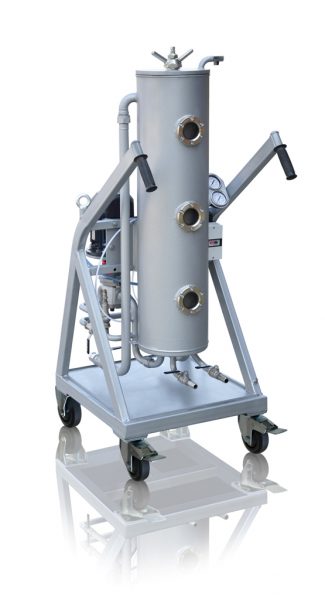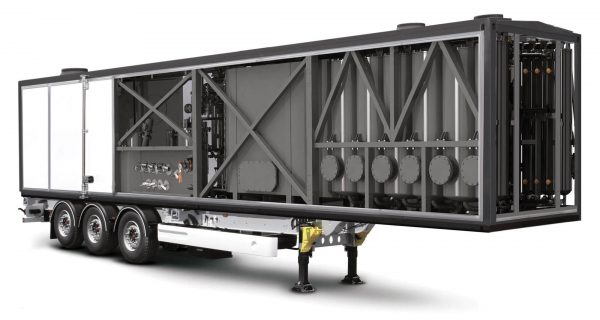Transformer oil is a special type of fluid which is used to fill power transformers. This product is obtained from petroleum distillates by application of selective, phenolic-alkaline and acid cleaning processes, as well as hydrocracking.
Quality and characteristics of transformer oil has a huge impact on the service life of a transformer. Let us formulate the most important general requirements to be met by oil uses in power transformers:
- Ensuring proper heat dissipation; this is achieved by good thermal conductivity, low viscosity and high heat capacity.
- Absence of acid, which adversely affects structural elements of transformers.
- High dielectric strength.
The most important requirement to transformer oil is its purity. Mechanical impurities, moisture, air and oxidation products significantly reduce the dielectric strength of oil, so it must be immediately cleaned from foreign components the amount of which exceeds the allowable values. In accordance with the existing requirements, there are following restrictions:
- Water content in the oil should not exceed 0.001% for sealed systems, and 0.0025% for not sealed systems;
- Air concentration in sealed systems should not exceed 0.5%;
- The presence of mechanical impurities must comply with the purity class 11 for transformers with voltage up to 220 kV, and purity class 9 for transformers with all other voltage ratings.
After continuous operation of transformer oil under load there is an increase in its temperature. In this regard, taking into account that transformer oils are flammable, users must take appropriate security measures. There is a validated parameter which characterizes the temperature at which oil vapors ignite from a close source of flame under normal conditions. This parameter is called flashpoint. For arctic oil this figure is within the range of +90°C… +115ºC and for conventional oil it is between +130°C and +170°C.
Transformer oil can oxidize not only on the surface but also when contacting dissolved air. Its amount should not exceed 11% at a pressure of 1 kgf/cm2. In this regard, transformer assembly must be preceded by oil degassing. Even a small amount of dissolved air can cause oxidation reaction in sealed systems, so oil must have high oxidation stability. GlobeCore CMM-type plants are used for transformer oil degassing.
Transformer equipment service life and reliability is largely determined by the quality and purity of oil which is being used in it. That is why before filling it must undergo a thorough check of all the parameters and characteristics, and subjected to purification, drying and degassing with GlobeCore equipment.
To protect transformers from the effects of atmospheric oxygen, they are equipped with film diaphragms and nitrogen protection.
Transformer oil operation leads to deterioration of its characteristics. This occurs due to the interaction of insulating liquid with the electric field, the air, and elevated temperatures. Oil may also interact with some particles of constructional materials, which leads to the formation of various impurities and insoluble sediments. The change of transformer oil properties is greatly affected by its oxidation. All the factors mentioned above lower oil breakdown voltage and flashpoint, increase its acid number and dielectric loss tangent. Insoluble sediments get into circulation channels and may substantially impair heat dissipation from hot parts.
Oil aging processes are the main cause of increased power consumption and reduced reliability of power transformers. In general, this process is irreversible, but it can be significantly slowed down. To solve this problem it is a good idea to use GlobeCore CMM-R-type plants. This equipment is designed for regeneration of transformer oil, i.e. full restoration of its operating parameters. Among the advantages of CMM-R-type plants are the capability of processing oil in a running transformer, as well as round-the-clock regeneration (with auxiliary units).
Regeneration has a huge advantage because it can be used repeatedly. As the cost of purchasing new oil and disposal of waste oil is relatively high, re-using the restored product is economically feasible.
But it is not sufficient to simply pour new or restored oil in the system. It’s all about the residual deposits on the internal surfaces of a transformer. Therefore, before filling, it should be removed by flushing with hot naphthenic or restored oil.


 СММur-1L mobile oil ...
СММur-1L mobile oil ... CMM-1,0CF Unit for ...
CMM-1,0CF Unit for ... CMM-12R Oil Regeneration ...
CMM-12R Oil Regeneration ...